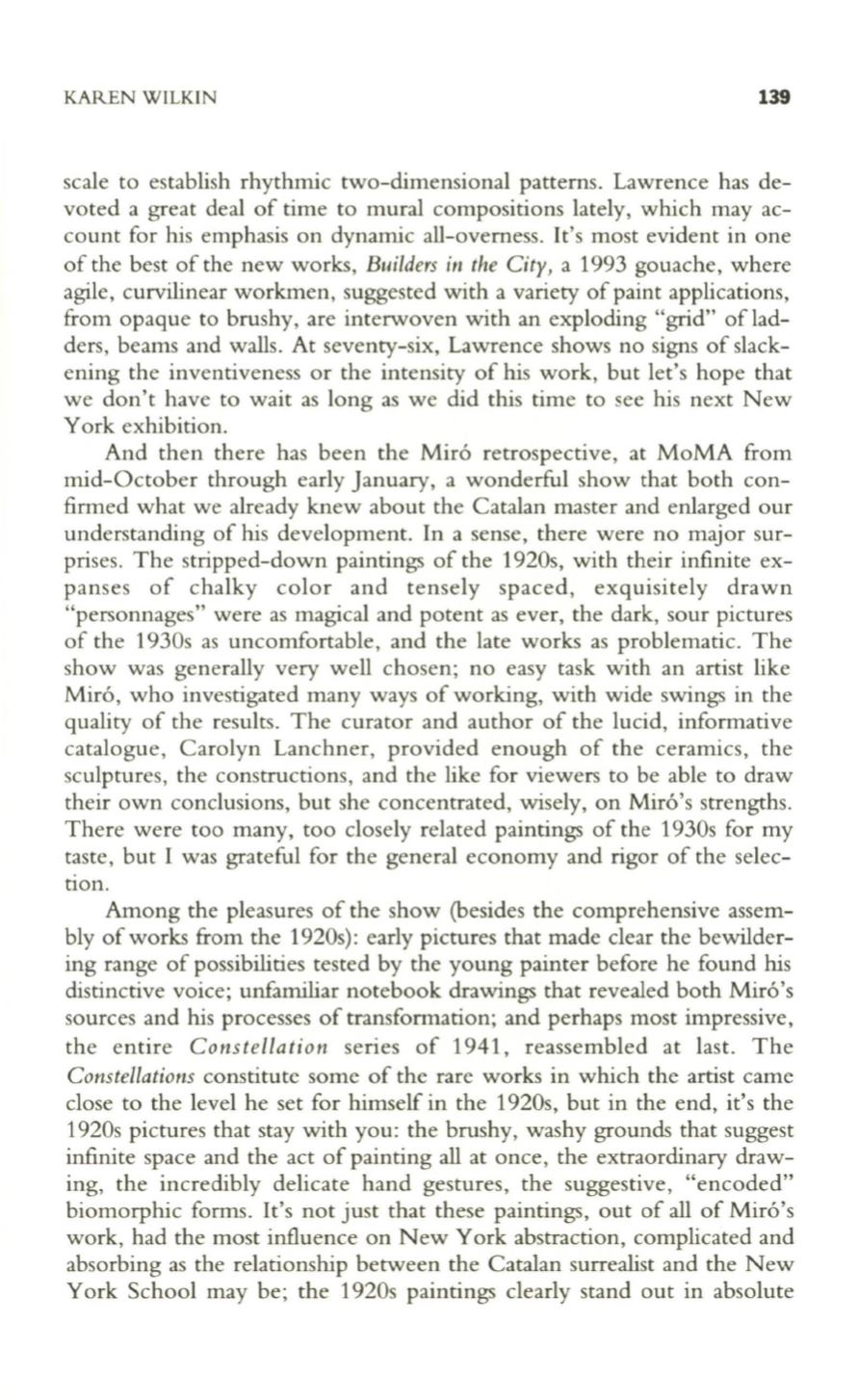
KAREN WILKIN
139
scale to establish rhythmic two-dimensional patterns. Lawrence has de–
voted a great deal of time to mural compositions lately, which may ac–
count for his emphasis on dynamic all-overness. It's most evident in one
of the best of the new works,
Builders in the City,
a 1993 gouache, where
agile, curvilinear workmen, suggested with a variety of paint applications,
from opaque to brushy, are interwoven with an exploding "grid" oflad–
ders, beams and walls. At seventy-six, Lawrence shows no signs of slack–
ening the inventiveness or the intensity of his work, but let's hope that
we don't have to wait as long as we did this time to see his next New
York exhibition.
And then there has been the Mir6 retrospective, at MoMA from
mid-October through early January, a wonderful show that both con–
firmed what we already knew about the Catalan master and enlarged our
understanding of his development. In a sense, there were no major sur–
prises. The stripped-down paintings of the 1920s, with their infinite ex–
panses of chalky color and tensely spaced, exquisitely drawn
"personnages" were as magical and potent as ever, the dark, sour pictures
of the 1930s as uncomfortable, and the late works as problematic . The
show was generally very well chosen; no easy task with an artist like
Mir6, who investigated many ways of working, with wide swings in the
quality of the results. The curator and author of the lucid, informative
catalogue, Carolyn Lanchner, provided enough of the ceramics, the
sculptures, the constructions, and the like for viewers to be able to draw
their own conclusions, but she concentrated, wisely, on Mir6's strengths.
There were too many, too closely related paintings of the 1930s for my
taste, but I was grateful for the general economy and rigor of the selec–
tion.
Among the pleasures of the show (besides the comprehensive assem–
bly of works from the 1920s): early pictures that made clear the bewilder–
ing range of possibilities tested by the young painter before he found his
distinctive voice; unfamiliar notebook drawings that revealed both Mir6's
sources and his processes of transformation; and perhaps most impressive,
the entire
Constellation
series of 1941, reassembled at last. The
Constellations
constitute some of the rare works in which the artist came
close to the level he set for himself in the 1920s, but in the end, it's the
1920s pictures that stay with you: the brushy, washy grounds that suggest
infinite space and the act of painting all at once, the extraordinary draw–
ing, the incredibly delicate hand gestures, the suggestive, "encoded"
biomorphic forms. It's not just that these paintings, out of
all
of Mir6's
work, had the most influence on New York abstraction, complicated and
absorbing as the relationship between the Catalan surrealist and the New
York School may be; the 1920s paintings clearly stand out in absolute


